Introduction
AWS Lambda has revolutionized the world of cloud computing, offering a seamless and scalable platform for running code without the need to provision or manage servers. This paradigm shift enables developers to focus solely on writing code that is automatically executed in response to various events, streamlining the development process and optimizing resource utilization. In this article, we will explore the key components of AWS Lambda, learn how to create your first Lambda function, and delve into advanced topics such as runtime selection and deploying with .zip files.
We will also discuss the integration of Lambda with other AWS services and explore best practices and common use cases. By the end of this article, you will have a comprehensive understanding of AWS Lambda and its role in modern application development. So, let's dive in and explore the power of AWS Lambda.
What is AWS Lambda and How Does it Work
AWS Lambda epitomizes the evolution of cloud computing, providing a seamless and scalable platform to run code without the need for provisioning or managing servers. It represents a paradigm shift in application development and deployment, enabling developers to focus solely on writing code that is automatically executed in response to various events, thereby streamlining the development process and optimizing resource utilization.
With AWS Lambda, companies like Chime Financial leverage serverless architecture to enhance their financial services, ensuring that they can scale effortlessly and maintain high availability without compromising on cost. These functions are inherently stateless, responding immediately to event triggers, and are a prime example of the innovation that AWS is continually driving in the cloud landscape.
Moreover, industry leaders such as Vertex Pharmaceuticals are harnessing the power of AWS Lambda combined with machine learning to revolutionize complex fields like drug discovery, where the analysis of voluminous experimental data is crucial. By integrating Lambda with other AWS services, organizations can process and analyze data more efficiently, resulting in accelerated research and development cycles.
AWS's commitment to innovation is further evidenced by recent advancements in storage solutions like Amazon S3 Express One Zone and compute technologies such as the Graviton series. These breakthroughs reflect AWS's ongoing dedication to providing versatile, high-performance solutions that cater to a diverse range of computing needs, from general-purpose applications to specialized workloads that require cutting-edge AI capabilities.
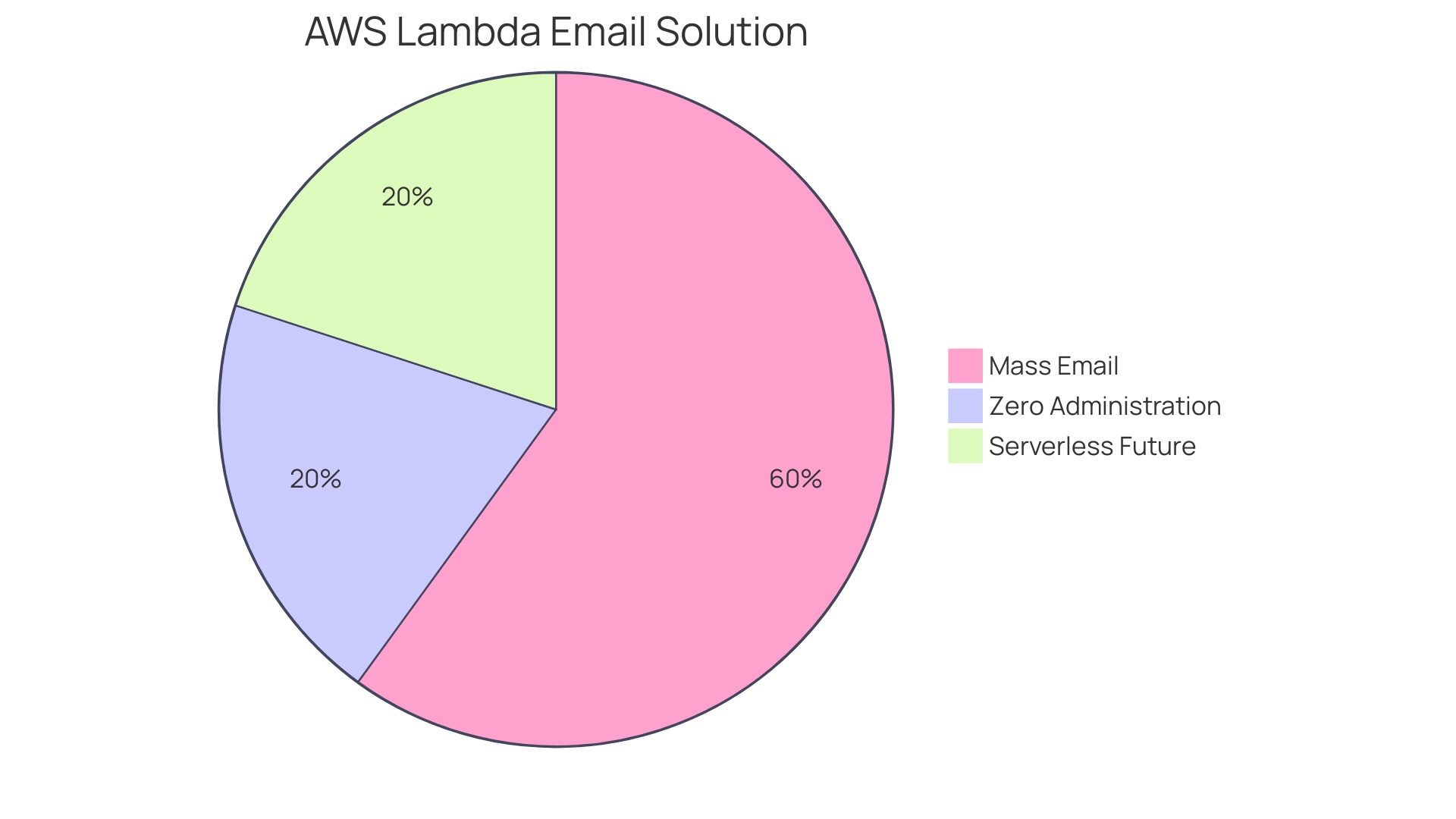
Key Components of AWS Lambda
AWS Lambda functions are a transformative approach to cloud computing, allowing developers to run code in response to events without the complexity of managing servers. Conceptualizing Lambda requires an understanding of its core components. The function code encapsulates the business logic that runs in response to triggers.
The runtime specifies the programming language environment. The handler is the entry point for Lambda to begin execution, while event sources, such as API Gateway or S3, determine when a Lambda is invoked. Finally, the execution role grants Lambda permission to utilize AWS resources on your behalf.
Breaking down the components further, imagine a scenario where Alice needs to run her application in the cloud. The configuration service stores her application code and settings. In contrast, the frontend handles invocation requests, performing tasks such as validation and authorization, with configurations stored in a database.
The worker, akin to a sandbox, provides the execution environment where Alice's code will actually run.
A compelling real-world instance of Lambda's power is shown in non-profits leveraging AWS's computational capabilities. For instance, organizations are using AI to identify infants at risk of brain injury, track global environmental issues through satellite imagery, and employ ML to detect instances of online child abuse, reviewing millions of files exponentially faster than humanly possible.
Highlighting the importance of building systems with observability, engineers are reminded that you cannot solve a problem you cannot see. Incorporating metrics and diagnostics tools into your Lambda functions enables rapid response to changing requirements and performance issues, ensuring that your serverless architecture remains robust and efficient.
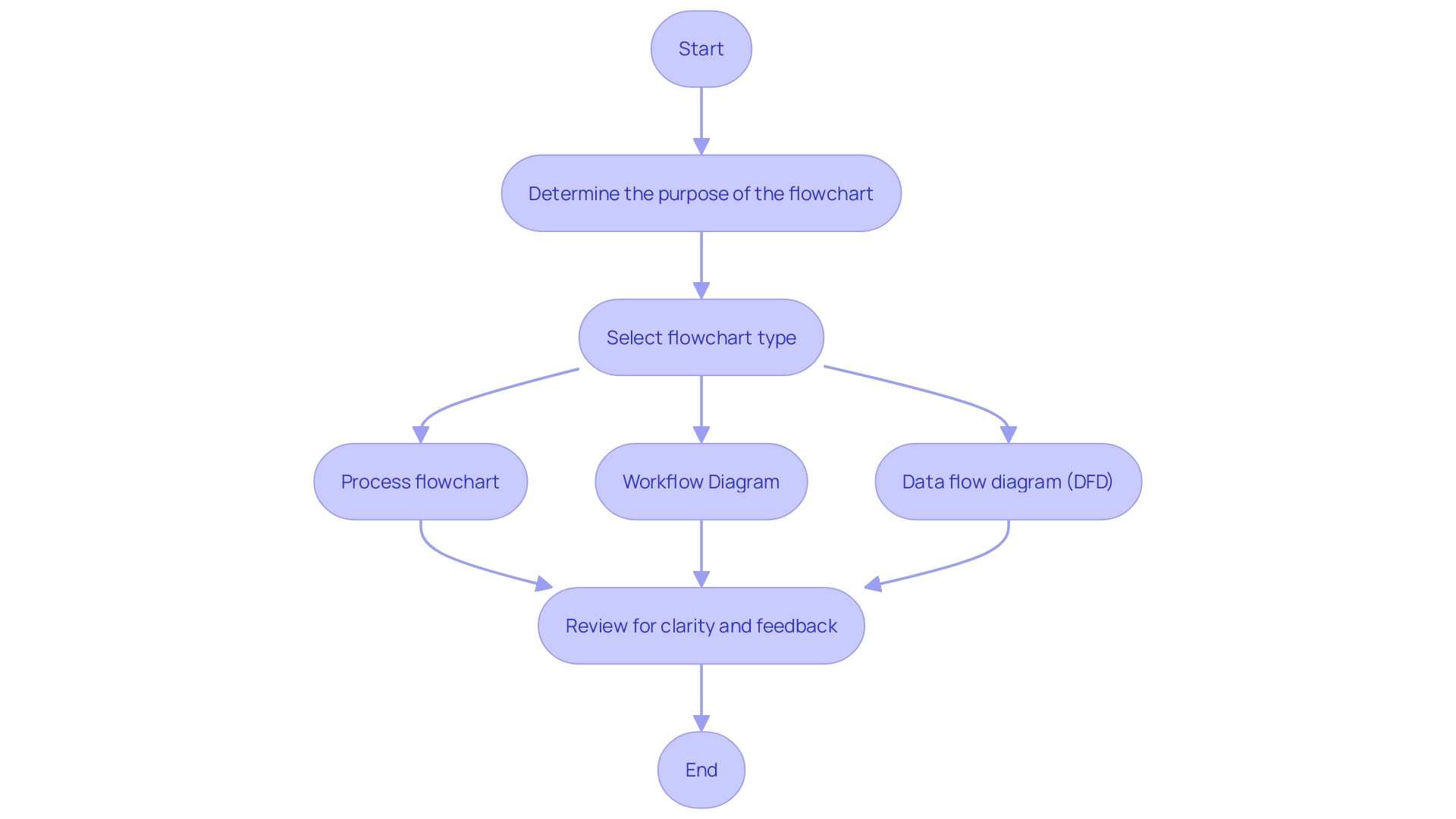
Creating Your First Lambda Function
Understanding AWS Lambda begins with recognizing its role as a cornerstone of serverless computing. AWS Lambda allows you to run code without provisioning or managing servers, which is a paradigm shift from traditional server-based computing. With Lambda, you can execute your code in response to triggers such as changes in data, system state, or user actions.
The creation of a Lambda function is a straightforward process accessible through the AWS Management Console. Here, you can create functions—small, stateless computing units that respond to events, such as Internet of Things (IoT) device data or scheduled tasks. Additionally, AWS Lambda provides an environment that supports applications, facilitating scalable and cost-efficient serverless, event-driven computing solutions.
To establish your first Lambda function and integrate it with services like API Gateway and EC2, begin by logging into the AWS Management Console and navigating to the Lambda dashboard. Remember that diving into serverless computing requires an understanding of the fundamentals to avoid a continuous cycle of debugging without comprehension. Embrace tools like Lambda for their time-saving capabilities, but always ground your practice in solid knowledge of the underlying technology.
As noted by industry experts, AWS Lambda is a zero-administration service offering significant cost savings, as it eliminates the need to manage EC2 instances, install operating systems, or configure language environments. It also automatically scales and ensures fault tolerance.
Moreover, the recent advances in AWS infrastructure, such as the introduction of Amazon S3 Express One Zone for highly accessed data, and the evolution of the Graviton processors, showcase AWS's commitment to providing high-performance and cost-effective solutions. These innovations underscore the importance of integrating AWS Lambda with other AWS services, leveraging the full potential of the AWS ecosystem to drive efficiency and innovation.

Step-by-Step Guide to Creating a Lambda Function Using the Console
AWS Lambda functions serve as the cornerstone of serverless computing, offering an event-driven approach that allows developers to run code in response to various events without the complexity of managing servers. To establish a Lambda function, begin with selecting the appropriate settings within the AWS Management Console. The creation process involves several crucial steps, starting with defining the endpoint through an environment variable, which affords flexibility by permitting changes without redeploying code.
The configuration journey continues as you navigate to the environment variables section under Configuration. Here, you can set the ENDPOINT_NAME key with the value corresponding to the previously created endpoint. This methodical setup is instrumental in ensuring that your Lambda function connects seamlessly with the intended services.
Once the initial setup is complete, the focus shifts to the function code itself. AWS provides a variety of templates tailored to different programming languages and use-cases, which can be leveraged to scaffold a project quickly. The choice of template should align with the specific task at hand, whether it's processing IoT data, automating workflows, or integrating with an API Gateway for secure and scalable serverless interactions.
As quoted by an industry expert, "In this blog post, I'll begin by providing a brief overview of serverless computing...Let's roll up our sleeves and delve into a few Lambda examples to get hands-on experience." This encapsulates the essence of Lambda functions, which are not just theoretical constructs but practical solutions to real-world challenges.
Moreover, the Serverless Framework facilitates an interactive set-up workflow, simplifying the process of creating and configuring a service. By selecting a suitable template, the necessary files are downloaded, and a service name is assigned—bearing in mind the naming conventions that involve lowercase letters, numbers, and hyphens.
In essence, AWS Lambda exemplifies the future of cloud computing, where every function is written to harness the full potential of serverless architecture, thereby eliminating operational overhead and fostering innovation. As businesses increasingly integrate digital technology into their models, AWS Lambda and the serverless paradigm become pivotal in driving competitive advantages and unlocking shareholder value, as highlighted in recent industry news and analysis.

Choosing the Runtime and Setting Up the Function
Selecting the right runtime for your AWS Lambda function is a critical step that can vastly improve performance. AWS Lambda supports a variety of runtimes, including Node.js, Python, and Java, allowing you to work with the language you are most comfortable with or that best suits your application's needs.
The performance of a Lambda function is akin to a team of chefs in a kitchen, ready to prepare meals instantly. Provisioned concurrency is one optimization technique where Lambda functions are kept 'warm,' ensuring they can respond immediately to requests, much like getting a prompt reply from a well-staffed kitchen.
In practice, optimizing Lambda functions can be as intricate as fine-tuning a high-performance engine. For instance, consider an app designed to fetch NFL stadium data from an Aurora database. The app needs to handle requests quickly and scale to high transaction rates.
To achieve peak performance, one must experiment with various configurations and monitor the results closely.
Memory allocation is another vital aspect to consider. It's imperative to determine the optimal memory needed for your Lambda function, then adjust it incrementally, observing the speed of execution at each step. This approach is similar to calibrating fuel intake in an engine for efficiency; too little hinders performance, while too much is wasteful.
Moreover, AWS Lambda's architecture is built to support intricate microservice patterns. The invoke routing layer is a crucial component that interlinks microservices, creating a cohesive system. The compute infrastructure is the sandbox where your code executes, and it's essential to understand these components to optimize your Lambda function effectively.
In summary, setting up your Lambda function with the right runtime and configuration can lead to significant performance gains. By following best practices and employing strategies like provisioned concurrency and careful memory allocation, you can ensure your serverless functions operate at their best, providing quick and reliable service to your users.
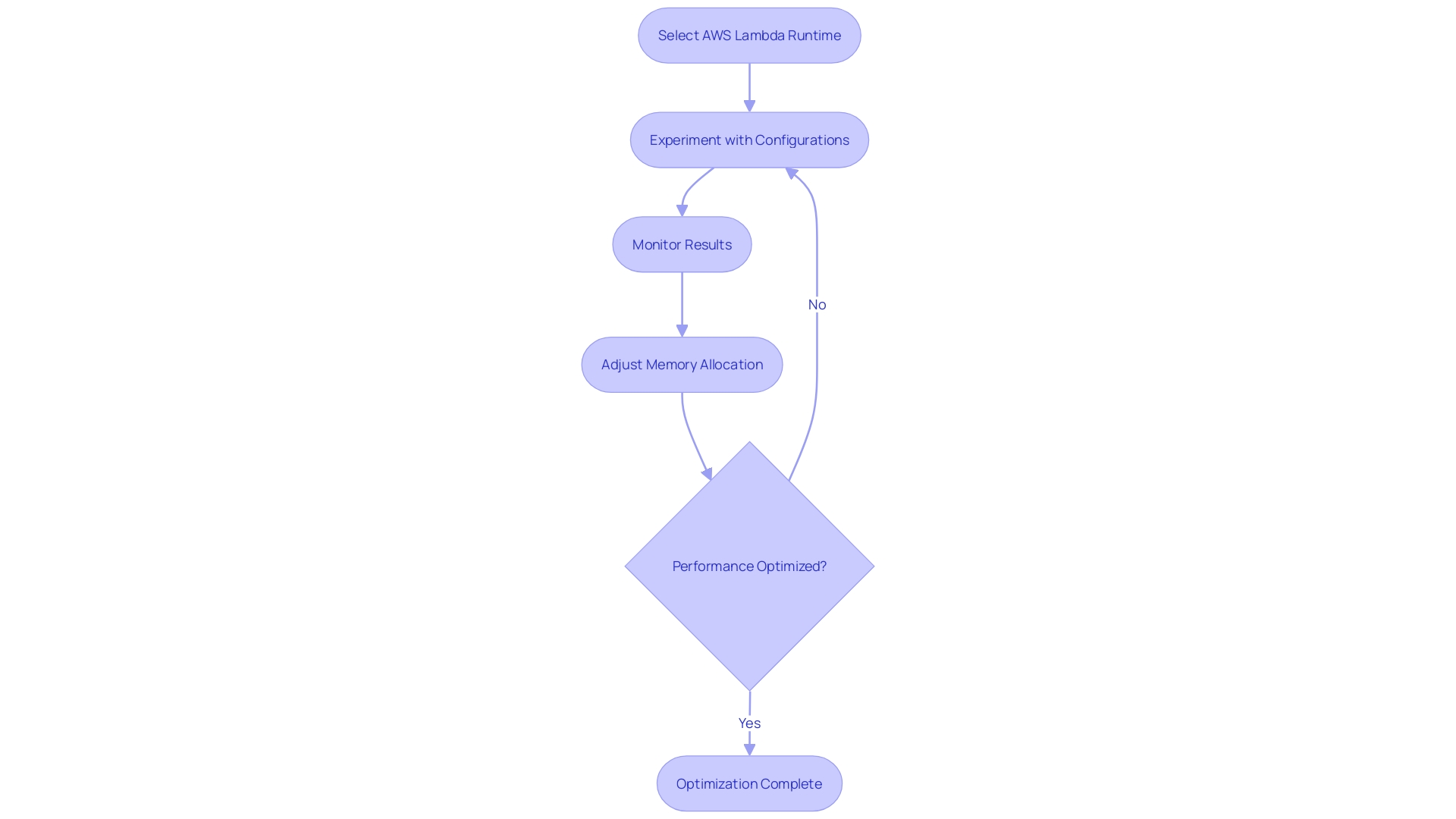
Writing and Deploying Your Lambda Function Code
When preparing to deploy a Lambda function, it's vital to focus not only on writing the code but also on ensuring it is efficient and optimized for the task at hand. Leveraging the ARM64 architecture, as opposed to the traditional x86_64, can be a wise choice if your code is compatible, providing cost-effectiveness and potentially enhanced performance for your AWS Lambda functions.
In the realm of serverless computing, AWS Lambda stands out by running your code on-demand across multiple regions, charging only for the compute time used, which emphasizes the importance of optimization. By drawing on the best practices and insights from the serverless community, such as those shared on platforms like Hacker News and StackOverflow, and tools like sls-mentor, you can refine your Lambda functions to be faster, cheaper, and more stable.
Optimizing your Lambda functions is akin to the software development mantra of 'make it work, make it right, then make it fast.' Start by ensuring your code functions correctly, then refine it by abstracting and generalizing as needed, and finally, focus on performance enhancements. This methodical approach to development can lead to more maintainable and efficient code.
Furthermore, integrating with other AWS services, such as Lambda@Edge with Amazon CloudFront, can further accelerate content delivery and enhance your web applications, showcasing the versatility of AWS Lambda when used in conjunction with other AWS offerings.
Remember, the journey toward optimization is filled with nuanced decisions, and the impact of these choices can be significant. As you iterate on your Lambda function, keep in mind the goal of improving performance through various techniques, learning from real-world applications and community-driven data, and integrating with the broader AWS ecosystem to create robust, scalable solutions.
Invoking and Testing Your Lambda Function
Integrating AWS Lambda functions into your workflow can revolutionize how you manage backend processes. For instance, consider the scenario where you're faced with a sizable zip file for deployment, and you're puzzled by its contents. Often, this is due to the inclusion of the complete C standard library, which can be streamlined by selectively packaging only the necessary components.
Moreover, the journey to a passing test can be accelerated with a structured approach. Create a dedicated folder for your Lambda function code, which you can do via the terminal or your preferred method. An example of this would be placing your Lambda code package inside a 'test' folder to avoid complications.
In this folder, a simple 'index.py' file containing a Lambda function can be created, which when invoked, returns a basic greeting like "Hello world".
Once set up, running an integration test runner will initiate the process, leading to your first test. Don't be deterred by initial failures; they are merely stepping stones to a fully functional Lambda deployment. As Neil Stevenson, Principal Architect at Hazelcast, advises, understanding the fundamentals of Lambda, including the invoke routing layer and compute infrastructure, is crucial for a comprehensive grasp of how your code will execute.
In the evolving landscape of software development, as highlighted by QCon's mission to empower innovation, it's important to remember advice from seasoned engineers: focus on solving the immediate problem. Avoid getting bogged down in abstractions—simplicity is your ally. Observability is also key.
You cannot address issues you cannot see, so ensure you have the tools to measure and diagnose problems effectively.
Furthermore, AWS Lambda's integration with services like API Gateway enables you to forward HTTP headers, excluding the 'Host' header, for instance, when using a Lambda function URL. This managed policy simplifies the setup process, allowing you to concentrate on your code's functionality.
In summary, embracing AWS Lambda involves a blend of strategic preparation, understanding of the system's components, and a pragmatic approach to problem-solving. With the right setup and observability, Lambda functions can be a powerful tool in your cloud computing arsenal.
Understanding Event Sources and Triggers
AWS Lambda functions are a cornerstone of serverless architecture, responding dynamically to events. A prime example of these functions at work is when they're integrated with Amazon API Gateway or Amazon EC2 instances, showcasing the power of event-driven computing.
Utilizing AWS Lambda, developers can create functions triggered by a vast array of event sources, such as changes in system state or user actions. With API Gateway, for example, Lambda functions can respond to RESTful API calls, enabling serverless backend services for web or mobile applications. This seamless integration allows for the automatic scaling of HTTP requests handling, ensuring that as the number of requests increases, Lambda functions can scale accordingly without manual intervention.
Similarly, by integrating Lambda with EC2, tasks such as instance management, and log processing become automated. EC2 can trigger Lambda functions to execute code in response to lifecycle changes, ensuring that system resources are optimized for both performance and cost.
To illustrate, consider the case of a company needing to refactor its system for better scalability and performance. By leveraging AWS Lambda, the company can transition to an event-driven model that registers customer intent and automates fulfillment processes. This shift not only addresses the heavy workload degradation but also supports the company's growth without the need for extensive refactoring.
These examples underscore the agility and efficiency that AWS Lambda offers, particularly when handling auto-scaling in serverless computing services. As companies look to innovate and speed up time to market, integrating Lambda functions with other AWS services such as API Gateway and EC2 stands out as a robust solution to meet evolving business needs and customer expectations.
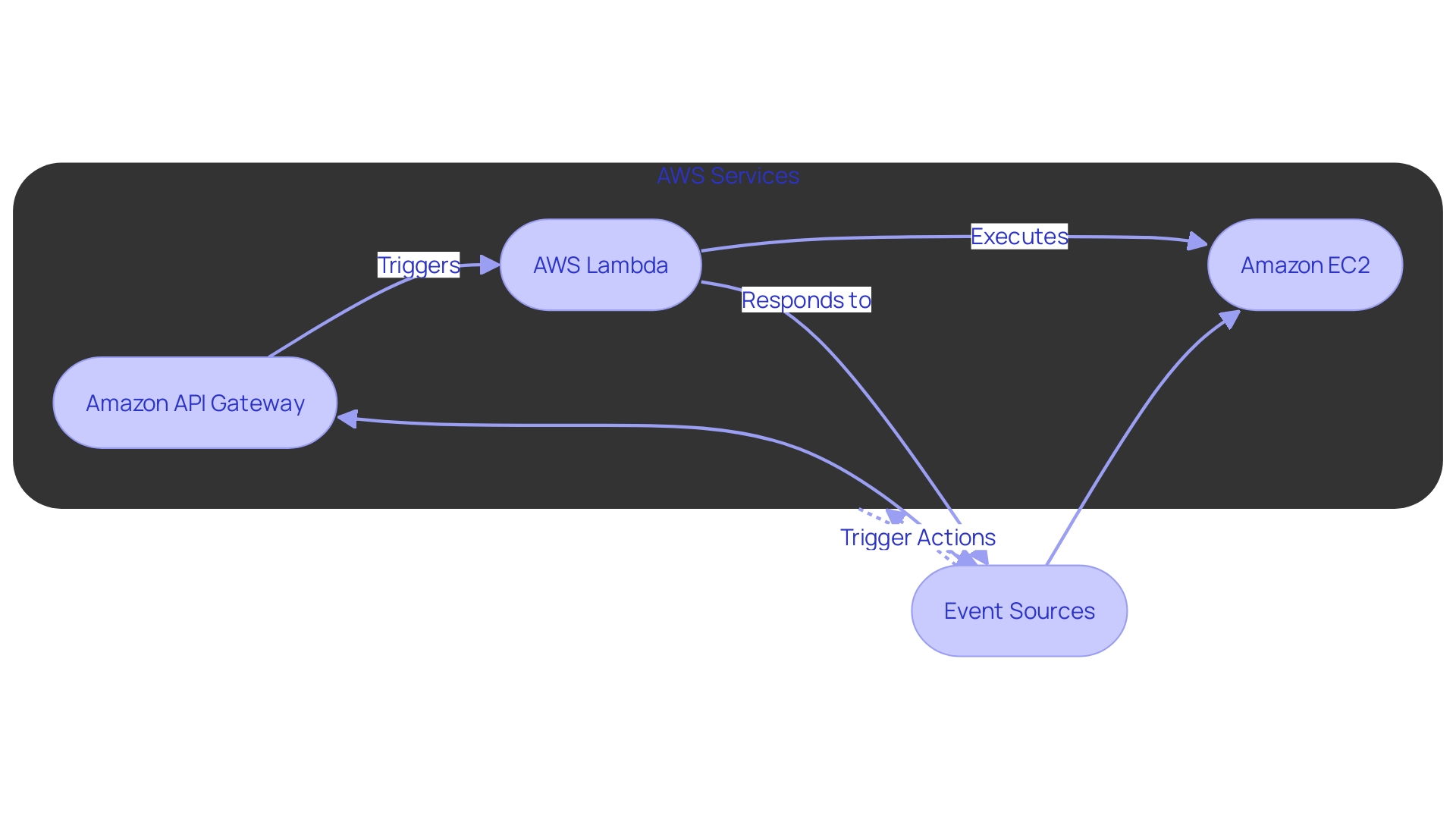
Using Execution Roles and Permissions
Configuring execution roles and permissions is crucial for Lambda functions to interact seamlessly with other AWS services. Amazon Web Services (AWS) provides a robust platform for deploying serverless applications with Lambda, facilitating the integration with API Gateway and EC2 instances, among others. To harness the full potential of AWS Lambda, it's essential to understand the assignment of correct roles and permissions.
For instance, at Vertex Pharmaceuticals, machine learning models are utilized to analyze extensive experimental data, necessitating seamless Lambda integration for computational efficiency. Similarly, in the cultural heritage sector, Lambda functions are fundamental in handling IIIF (International Image Interoperability Framework) API requests for dynamic resource delivery. This is analogous to how AWS Lambda operates, delivering only the required computing power, much like IIIF delivers image pixels.
Furthermore, AWS's recent advancements, like the introduction of Amazon S3 Express One Zone for high-request data storage and the evolution of their computing power with Graviton processors, emphasize the importance of expertly configured Lambda functions for optimal performance and cost-effectiveness.
To illustrate, a multitenant file management application with different access levels for CEOs and users showcases the necessity of well-designed Lambda functions. Here, shared authorization code across functions can simplify permission management, ensuring secure and efficient access control. Neil Stevenson, Principal Architect at Hazelcast, underscored the importance of understanding Lambda's fundamentals, the invocation routing layer, and the compute infrastructure to leverage its capabilities fully.
By meticulously configuring execution roles and permissions, organizations can ensure that their Lambda functions are not only compliant with security policies but also primed to take advantage of AWS's scalable and on-demand cloud infrastructure.
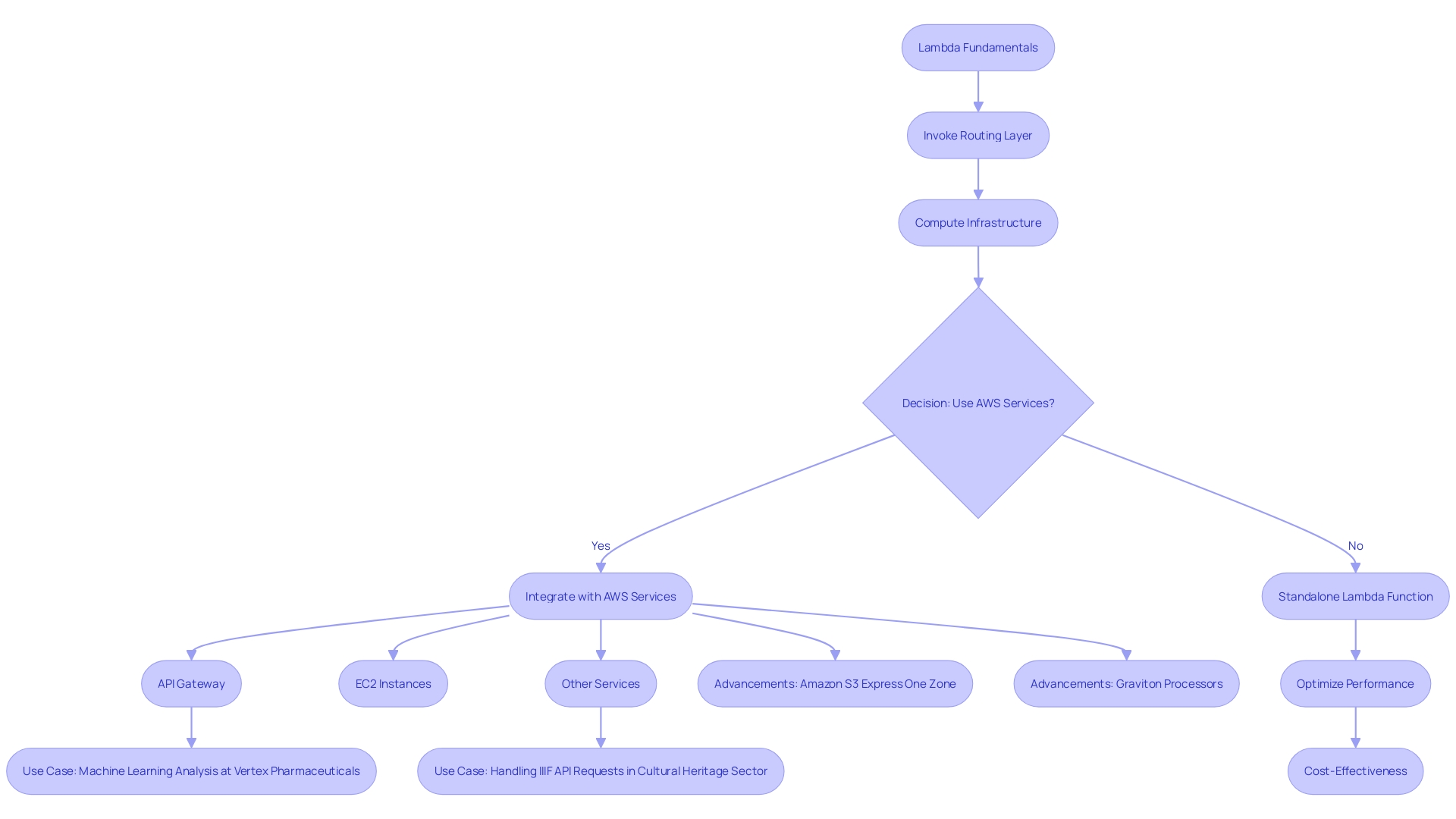
Monitoring and Logging with CloudWatch
AWS CloudWatch is an integral component for monitoring the health and performance of AWS resources, including Lambda functions. With the recent introduction of the Infrequent Access log class in CloudWatch Logs, AWS has enhanced its capability for cost-effective log management, accommodating the expansive volume of logs generated by scaling applications. This new class is specifically designed for logs that are not accessed frequently, offering a more affordable solution without sacrificing the visibility and features that CloudWatch traditionally provides.
To proactively monitor Lambda functions, it is essential to focus on identifying critical service flows and understanding the serverless components involved. As Xan Huang, a Senior Solutions Architect at AWS, advises, it is crucial to analyze how to detect impending failures or errors through specific log messages or metrics. By leveraging CloudWatch's comprehensive monitoring, you can gain timely insights into potential issues, ensuring they are addressed before impacting customers.
CloudWatch, together with AWS X-Ray, offers seamless integration with other AWS services, empowering you to create custom dashboards, set alarms, and utilize anomaly detection—all while adhering to compliance and security standards. These tools are instrumental in achieving full observability of logs, metrics, and traces, and are essential for any robust monitoring strategy. In addition, AWS provides training options to familiarize users with these observability tools, ensuring you can harness their full potential.
Moreover, engineering best practices emphasize the importance of building observability into systems from the outset. As one expert puts it, "Observe and Measure. Engineering is applying knowledge to solve problems under a given cost/benefit tradeoff.
You cannot solve a problem you cannot see. Seeing is measuring. Use your tools to diagnose the problem, have a metric for success, then measure again after applying your solution."
This philosophy is reflected in the core functionalities of observability, where logging plays a pivotal role by providing detailed records of system activities, aiding in troubleshooting, and offering a historical perspective for forensic analysis.
By integrating CloudWatch into your monitoring practices, you can ensure that your AWS Lambda functions and other resources are operating efficiently and effectively. In the following sections, we will delve further into the mechanisms and best practices for leveraging AWS CloudWatch to its fullest extent.
Advanced Topics: Deploying with .zip Files and Using Function URLs
Beyond the graphical interface of the AWS Management Console, deploying Lambda functions can be accomplished through alternative methods such as .zip files and utilizing function URLs. These methods offer advanced deployment capabilities. For instance, using .zip files for deployment allows developers to package their code and dependencies into a single file, streamlining the deployment process.
Moreover, function URLs provide a direct invocation endpoint for your Lambda functions, making it simpler to integrate with other services or call the function from web applications.
When considering the integration of AWS Lambda with other AWS services, such as S3, the combination becomes particularly powerful. S3's ability to store vast amounts of data coupled with Lambda's serverless execution model enables the creation of scalable and cost-effective applications. For example, Lambda functions can be triggered by events in S3, such as file uploads, to process data without the need for server provisioning.
Furthermore, Lambda's efficiency is underscored by the fact that you only pay for the compute time used, with no charges when your code isn't running. This pay-as-you-go model is a testament to the service's popularity and is a key consideration for organizations looking to optimize their cloud expenditures. The serverless nature of Lambda, along with its auto-scaling capabilities, handles workloads ranging from a handful to thousands of requests per second, emphasizing the service's agility and performance.
In summary, advanced deployment techniques using .zip files and function URLs, along with the strategic combination of Lambda with services like S3, underscore AWS's commitment to providing scalable, efficient, and cost-effective solutions for modern application development.
Integrating Lambda with Other AWS Services
AWS Lambda functions, with their serverless execution model, are at the forefront of enabling scalable, efficient, and event-driven architectures. Notably, Lambda seamlessly integrates with AWS S3, facilitating operations such as data backup and serverless processing. For instance, you can automate the copying of data from a primary S3 bucket to a secondary one, enhancing data redundancy and ensuring robust disaster recovery mechanisms.
When a new object lands in the primary bucket, a Lambda function can be triggered to replicate the file to the backup bucket, ensuring data integrity and availability.
The versatility of Lambda extends beyond storage solutions, allowing for innovative applications like mass email dispatch through Simple Email Service (SES). By storing a mailing list in an S3 bucket, Lambda can swiftly distribute personalized emails, circumventing the need for costly and complex traditional email server setups.
Moreover, leveraging the AWS Cloud Development Kit (AWS CDK), companies like AnyCompany can overcome challenges in managing extensive product catalogs. With Lambda's help, they can implement advanced search capabilities, substantially improving the customer shopping experience and driving sales by allowing easy product discovery.
AWS Lambda's integration with AWS services is also highlighted in community-driven projects. For example, the ec2-flexibility-score-dashboard utilizes Lambda to assess EC2 configurations against best practices, translating these evaluations into a 'flexibility score' that aids in optimizing cloud infrastructure.
Lambda's practical applications are exemplified by the Northwestern University Libraries (NUL), which harnessed AWS services to enhance their digital collections suite. By adopting the IIIF standard, NUL enabled efficient global sharing of cultural heritage, with Lambda helping to deliver scalable access to digitized resources.
As serverless computing continues to evolve, the recent announcement of Amazon S3 Express One Zone illustrates the ongoing commitment to high-performance, scalable storage solutions, which pair well with Lambda's compute capabilities. With AWS continually innovating its services, Lambda remains a central component in architecting modern, responsive applications that meet the demands of both today's users and developers.

Best Practices and Common Use Cases
Harnessing AWS Lambda effectively can revolutionize the way organizations build and operate their software infrastructure. For instance, AWS Lambda allows the creation of serverless email solutions using Simple Email Service (SES), which is a leap forward from traditional systems that often require costly capital investment. By storing mailing lists in S3, Lambda functions can distribute emails in HTML or plain text to a vast number of recipients rapidly and cost-effectively.
Moreover, AWS Lambda's capacity for seamless API Gateway integration demonstrates its prowess in establishing scalable and secure serverless interactions. The integration exemplifies how Lambda functions can respond to HTTP requests and manage the execution of business logic, thereby simplifying API management.
In the realm of serverless computing, AWS Lambda stands out for its utility in a multitude of scenarios, such as IoT data processing and automating tasks based on schedules or events. For example, the Northwestern University Libraries (NUL) utilized Lambda's capabilities to implement the International Image Interoperability Framework (IIIF), allowing deep analysis of digital collections without excess bandwidth consumption.
Furthermore, the financial technology company Chime leverages Lambda to analyze vast datasets for fraud detection, ensuring the security of their members' transactions. By utilizing AWS Lambda, Chime illustrates how serverless functions can be integral in maintaining the integrity of financial systems.
We're witnessing a shift towards a serverless future, where the maximization of code potential and minimization of operational overhead are paramount. AWS Lambda is at the forefront of this transformation, empowering organizations to innovate and execute their visions more efficiently than ever before.
References
AWS Lambda functions offer a powerful, serverless solution for integrating with various AWS services, such as API Gateway and EC2. These integrations allow for streamlined workflows and automation, reducing the need for manual intervention and oversight. For instance, Chime Financial leverages AWS Lambda to detect and protect against unauthorized transactions, demonstrating Lambda's capability to analyze patterns and flag potentially fraudulent activities in real-time.
This use case underscores the service's adaptability and its utility in critical financial operations.
In the realm of drug discovery, companies like Vertex Pharmaceuticals have employed AWS Lambda in conjunction with machine learning techniques to expedite the analysis of experimental data. By automating the analysis of microscope images, Lambda functions facilitate a more efficient drug development process, enabling researchers to focus on innovation rather than mundane tasks.
Moreover, AWS is constantly enhancing its services, as evidenced by the recent advancements in Alexa's generative AI. Such improvements highlight the continual evolution of AWS offerings, ensuring that services like Lambda remain at the forefront of technological progress.
For those seeking to delve deeper into AWS Lambda and its capabilities, Amazon provides an extensive array of documentation and developer guides. These resources are invaluable for understanding the intricacies of Lambda functions, from the core concepts to more advanced topics like invoke routing layers and the underlying compute infrastructure. With these resources at hand, developers and architects can harness the full potential of AWS Lambda to drive efficiency and innovation within their projects.
Conclusion
AWS Lambda has transformed cloud computing by providing a seamless and scalable platform for running code without the need to manage servers. This shift allows developers to focus solely on writing code that is automatically executed in response to events, streamlining development and optimizing resource utilization. The integration of Lambda with other AWS services further enhances its capabilities and allows for the creation of scalable and efficient applications.
Understanding the key components of Lambda, such as function code, runtime, handler, event sources, and execution role, is crucial for creating robust and efficient Lambda functions. By following best practices and grounding your practice in solid knowledge, you can ensure optimal performance and cost savings.
Creating your first Lambda function is straightforward through the AWS Management Console. By choosing the right runtime, optimizing the function's setup, and leveraging the ARM64 architecture, you can improve performance and efficiency. Integrating Lambda with other AWS services, such as S3, API Gateway, and EC2, maximizes its potential and enables the creation of scalable and cost-effective solutions.
Monitoring and logging Lambda functions with CloudWatch is essential for maintaining their health and performance. CloudWatch provides comprehensive monitoring and timely insights, allowing for proactive troubleshooting and optimization. Leveraging advanced deployment techniques like using .zip files and function URLs further enhances the deployment process.
In conclusion, AWS Lambda empowers organizations to innovate and execute their visions more efficiently. By understanding its components, following best practices, and integrating with other AWS services, developers can harness the full potential of Lambda and drive efficiency and innovation within their projects.




